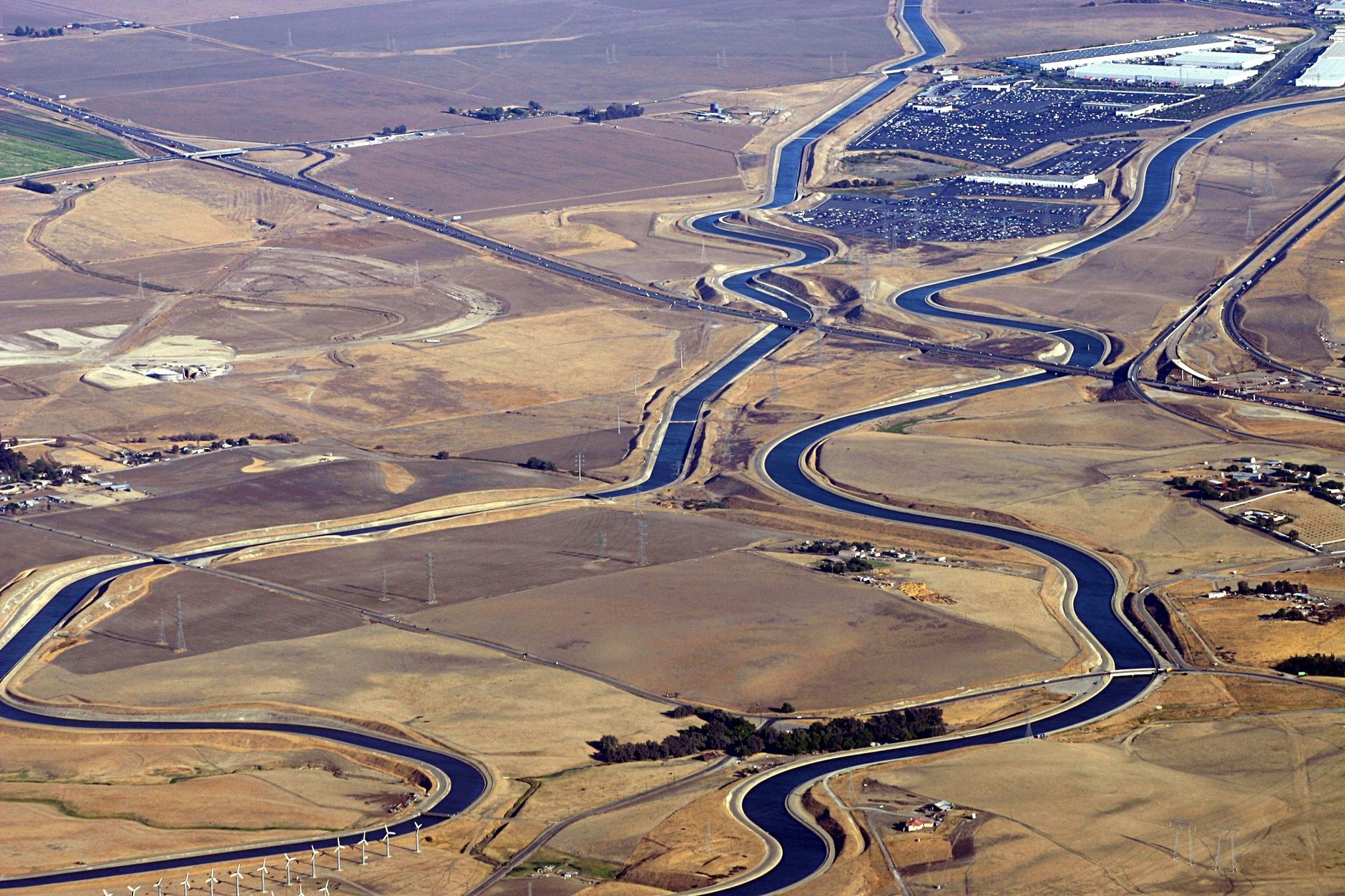(CN) --- Researchers on Thursday said covering California’s 3,945 miles of canals with solar panels could produce an enormous amount of clean energy every year, and slow the evaporation of valuable water.
California’s system of reservoirs, canals and aqueducts is the largest water conveyance system in the world: the California Aqueduct alone spans 444 miles from Contra Costa County in the Bay Area, through the Central Valley, down to Los Angeles County in the south. Covering the length of it and canals like it in solar panels could provide much of the state with clean energy --- but at what cost?
Researchers from UC Santa Cruz and UC Merced performed a type of cost-benefit analysis for such a design, and published their findings in a new study Thursday in the journal Nature Sustainability.
“While it makes sense to cover canals with solar panels because renewable energy and water conservation are a win-win, the devil is in the details,” said Brandi McKuin, lead author of the study and a UC Santa Cruz postdoctoral researcher in environmental studies, in an email. “I was surprised to learn that, when we penciled in the co-benefits, this type of development could be cost-competitive with ground-mounted installations.”
The steel trusses and cables used to suspend solar panels over waterways are more expensive than traditional ground or roof mounting solutions, but the cost of land acquisition is much cheaper. The authors set out to determine whether the latter can offset the former and bring down the price per kilowatt of energy produced. Water saved from evaporation is also crucial, as California cities and farmers perpetually thirst for more.
“Solar energy is among a suite of technologies for reducing greenhouse gas emissions and the threats of climate change,” McKuin added. “But like any development, where it’s sited affects its overall environmental sustainability.
"Covering canals with solar panels avoids solar development on open land including farmland or critical environmental areas which benefits terrestrial ecosystems. Additionally, using ‘already disturbed land’ means developers can avoid land costs and protracted environmental permitting and right-of-way issues so systems can be deployed more quickly and cost-effectively.”
A similar pilot project in Gurjarat, India kicked off in 2012 and is expected to generate 1MW of electricity while preventing the evaporation of 2.4 million gallons of water annually. That project spans 2,460 feet, a small fraction of the California Aqueduct’s size, and they found the price per megawatt to be substantially lower than that of traditional solar farms. Citing the project’s success, the Indian government has since commissioned a number of similar projects.
For reference, one megawatt of solar energy is enough to replace 15-20 diesel-powered irrigation pumps in California’s Central Valley, an agricultural region with notoriously bad air quality. The authors say situating renewable energy projects like this in this region could have a profound effect given the region’s importance on global food production.
Building atop existing canals keeps land acquisition costs low --- of paramount importance in California where steep land prices remain a major stumbling block for any new infrastructure project.
“With a little engineering ingenuity, we can turn challenges into opportunities and the multiple benefits of this project illustrate that. Covering canals with solar panels have other benefits that extend beyond water savings and renewable energy,” McKuin explained. “For example, the cooler microclimate next to the canal mitigates panel heating which boosts PV efficiency, and shade from the panels mitigates aquatic weed growth which is a major maintenance issue.”
Study co-author Andrew Zumkehr pulled data from satellites, climate models and weather stations to conduct a hydrological analysis on the proposed project. McKuin then employed Zumkehr’s analysis to calculate the cost-savings of shading canals with solar panels.
They found the benefits of covering canals with solar panels varies by region, as areas across the state experience differing rates of evaporation and fluctuating water prices. Previous studies focused only on small sections of waterways and didn’t account for the variability of a canal that runs nearly the length of a large state like California, cutting across a plethora of unique terrains and climates.
“Over-canal solar PV systems could help California achieve its ambitious goals to reduce greenhouse gas emissions (for example, Assembly Bill 32) while improving irrigation management (for example, the State Water Efficiency and Enhancement Program),” concluded the authors. “However, the success of over-canal solar PV systems would depend on policies that support public–private partnerships, appropriate renewable energy siting, subsidies for renewable energy projects in the form of tax incentives and import tariffs.”
Subscribe to Closing Arguments
Sign up for new weekly newsletter Closing Arguments to get the latest about ongoing trials, major litigation and hot cases and rulings in courthouses around the U.S. and the world.









